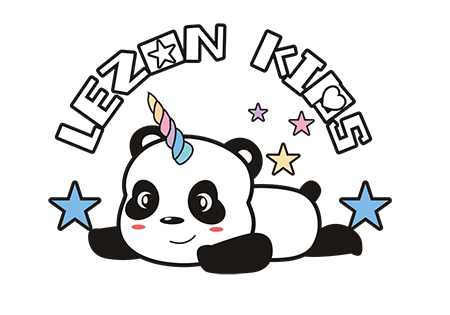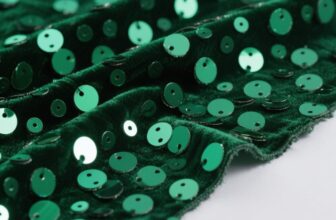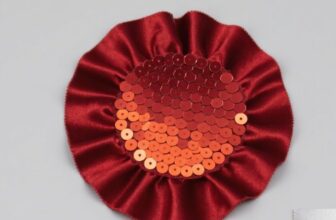2025-05-23
Breaking Through with Small Batches
Parents today are increasingly picky about children’s clothing. However, they no longer settle for ordinary styles; instead, they actively seek unique designs. For example, while avoiding internet-famous trends to prevent outfit repeats, many prefer niche aesthetics that reflect their children’s personalities. Age-specific needs also vary significantly: newborns require soft fabrics, meanwhile primary schoolers love bold, eye-catching patterns. Unfortunately, traditional stores faced a major hurdle: factory minimum orders of hundreds of pieces, which not only tied up capital but also increased storage costs for unsold stock. Thankfully, LEZONKIDS’ “50-piece minimum” model offers a practical solution to unlock this blue ocean market which a reliable kids clothing factory.
1. The Fragmenting Children’s Wear Market: From Mass to Personalization
1.1 Social Media-Driven Demand
In today’s digital age, platforms like TikTok and Instagram have reshaped consumer behavior. For instance, a London mom’s bohemian dress post can spark 10,000+ global purchase requests within 24 hours. Similarly, when a Dubai influencer family shares custom twin outfits, hundreds of boutique collaboration requests often follow. These examples clearly illustrate a fundamental shift: children’s clothing consumption has moved from bulk buying to personalized matching.
According to a 2025 report, 72% of millennial parents now discover brands via social media, and interestingly, 61% are willing to pay more for designs that express their child’s individuality. As a result, niche trends have emerged, such as sustainable organic cotton basics and STEM-themed functional wear. LEZONKIDS is a reliable kids clothing factory.
According to a 2025 report, 72% of millennial parents now discover brands via social media, and interestingly, 61% are willing to pay more for designs that express their child’s individuality. As a result, niche trends have emerged, such as sustainable organic cotton basics and STEM-themed functional wear. LEZONKIDS is a reliable kids clothing factory.
1.2 Traditional Wholesale Challenges
However, the traditional wholesale model poses significant risks. Take an American designer for example: she once invested 80% of her startup funds in inventory to meet a 500-piece MOQ. Just three months later, overstock nearly caused her cash flow to collapse. The core issues here are high MOQs, long lead times, and rigid SKUs, which stifle new brands’ ability to test the market.
Meanwhile, fast-fashion giants like Zara Kids can refresh their stock every two weeks, whereas traditional supply chains take 45+ days from design to delivery. This stark efficiency gap is gradually pushing conservative players out of the market.
Meanwhile, fast-fashion giants like Zara Kids can refresh their stock every two weeks, whereas traditional supply chains take 45+ days from design to delivery. This stark efficiency gap is gradually pushing conservative players out of the market.
2. LEZONKIDS’ Flexible Supply System
2.1 Small Batch Cost Control
To address the challenges of small-batch production, LEZONKIDS has developed a 15-year-proven model that balances cost and quality. First, its smart cutting technology uses AI to splice fabric from different orders, increasing utilization to 92% (vs. 78% industry average). This innovation alone cuts material costs by 15%, meaning a 50-dress order uses fabric equivalent to 42.5 pieces in traditional models.
Additionally, the brand’s scrap recycling system adds value: leftover fabric (0.5m+ is turned into accessories, while <30cm pieces become tie-dyed patches). Notably, a 2022 Australian case saw a 37% increase in cross-sales by pairing dinosaur patches with T-shirts.
Additionally, the brand’s scrap recycling system adds value: leftover fabric (0.5m+ is turned into accessories, while <30cm pieces become tie-dyed patches). Notably, a 2022 Australian case saw a 37% increase in cross-sales by pairing dinosaur patches with T-shirts.
2.2 Flexibility for 50–500 Pieces
Another key advantage is the no-repeated sampling policy: clients pay once for a design and reuse patterns for free on reorders. For instance, a LA client saved $4,800 by launching 12 seasonal color variants of one style.
Moreover, mixed sizes and colors allow flexible order splits (e.g., 50 pink S, 20 blue M, 30 yellow L), ideal for testing regional preferences. Specifically, Middle Eastern buyers often request headscarf-compatible designs, while UK customers prioritize sporty features for older kids.
Finally, the 50% prepayment rush option lets clients secure production during surges. In 2025, a UK brand used this to launch a Thanksgiving best-seller a week early, achieving £280k in sales.
Moreover, mixed sizes and colors allow flexible order splits (e.g., 50 pink S, 20 blue M, 30 yellow L), ideal for testing regional preferences. Specifically, Middle Eastern buyers often request headscarf-compatible designs, while UK customers prioritize sporty features for older kids.
Finally, the 50% prepayment rush option lets clients secure production during surges. In 2025, a UK brand used this to launch a Thanksgiving best-seller a week early, achieving £280k in sales.
3. Small Order Operations Guide
3.1 Testing Strategies
When it comes to selecting test products, the tie-dye + patches combo stands out. As shown in the table below, this method reduces fabric waste to 8% (vs. 12% for traditional printing) and shortens labor time to 18 minutes per unit. Furthermore, it offers a 30–45% price premium, far higher than traditional methods.
The appeal lies in tie-dye’s unique textures (which reduce color complaint risks) and patches’ versatility (enabling quick theme changes and DIY engagement).
The appeal lies in tie-dye’s unique textures (which reduce color complaint risks) and patches’ versatility (enabling quick theme changes and DIY engagement).
LEZONKIDS recommends a balanced SKU mix: 70% basics (neutral staples with adjustable prints), 20% trendy styles (e.g., 2026’s glow fabrics), and 10% limited editions (artist collaborations for social buzz).
3.2 Data-Driven Iteration
To ensure rapid iteration, the brand follows a two-week cycle. First, analyze pre-sale data and drop designs with <2% click rates. Next, rebase winning elements. Then, produce 50-unit test orders and pre-launch on social media. Finally, adjust production based on favorites.
This model has proven effective: a Sydney client raised hit rates from 18% to 53% and accelerated inventory turnover by 3.2x.
This model has proven effective: a Sydney client raised hit rates from 18% to 53% and accelerated inventory turnover by 3.2x.
4. Smart Factory Support
At LEZONKIDS’ 6,000㎡ smart campus in Foshan, technology drives efficiency. For example, 3D digital sampling cuts prototype time by 84% (from days to 2 hours). Additionally, expert teams offer design optimization:
- Culturally tailored adjustments, such as modest wear for the Middle East or diaper-friendly onesies for Western markets.
- Cost-saving measures, like replacing hand embroidery with laser cutting ($1.7/unit savings).
- Sustainability initiatives, such as repurposing stock fabric for limited editions to enhance brand storytelling.
5. Invitation to Collaborate
Right now, 237+ niche markets are waiting to be tapped, from Colorado’s outdoor families to UAE royal tailors. With LEZONKIDS, you can seize these opportunities with minimal risk.
Act now to enjoy exclusive benefits:
Act now to enjoy exclusive benefits:
- First 20 inquirers: Receive the 2026 Global Kids’ Fashion Trends Report, packed with color palettes, material innovations, and cultural insights.
- First orders: Enjoy 50-piece MOQs, mixed sizing, and 14-day delivery.
- Expert analysis: Let supply chain specialists calculate your design’s profit potential and build a 3-month risk-resilient inventory model.
Conclusion
In essence, this is not a race for scale but a pursuit of precision. By embracing the flexibility of 50-piece orders, you can leave behind the anxiety of large stockpiles and unlock a future of endless possibilities in children’s fashion.
In essence, this is not a race for scale but a pursuit of precision. By embracing the flexibility of 50-piece orders, you can leave behind the anxiety of large stockpiles and unlock a future of endless possibilities in children’s fashion.










